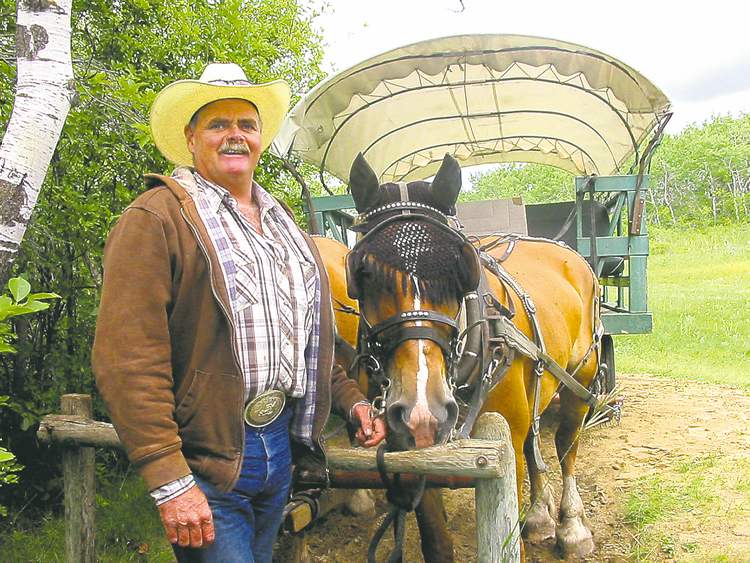Manitoba’s ‘desert’ disappearing under greenery
Advertisement
Read this article for free:
or
Already have an account? Log in here »
We need your support!
Local journalism needs your support!
As we navigate through unprecedented times, our journalists are working harder than ever to bring you the latest local updates to keep you safe and informed.
Now, more than ever, we need your support.
Starting at $15.99 plus taxes every four weeks you can access your Brandon Sun online and full access to all content as it appears on our website.
Subscribe Nowor call circulation directly at (204) 727-0527.
Your pledge helps to ensure we provide the news that matters most to your community!
To continue reading, please subscribe:
Add Brandon Sun access to your Free Press subscription for only an additional
$1 for the first 4 weeks*
*Your next subscription payment will increase by $1.00 and you will be charged $20.00 plus GST for four weeks. After four weeks, your payment will increase to $24.00 plus GST every four weeks.
Read unlimited articles for free today:
or
Already have an account? Log in here »
Hey there, time traveller!
This article was published 26/07/2013 (4466 days ago), so information in it may no longer be current.
SPRUCE WOODS PROVINCIAL PARK — Cheryl Pankratz hadn’t seen Manitoba’s sandhills since before she moved to Australia in 1992. The sight during her recent return visit was a shock.
“This was all sand,” said Pankratz, who grew up in nearby Glenboro, as the horse-drawn wagon pulled the tour group across a field completely covered by vegetation.
“It’s unbelievable. We used to run up and down the dunes,” she continued as the wagon traversed another part of the Spirit Sands. “It was just dunes of undulating sand. It’s changed so quickly.”

What will future generations say if the last open patch of Manitoba’s sandhills disappears, buried under vegetative ground cover, something that is now only a few years away?
The question came up during Larry Robinson’s tour ride of the Spirit Sands in Spruce Woods Provincial Park south of Carberry. Robinson is the grizzled cowboy who’s been giving horse-drawn wagon rides through the “desert” for nearly two decades under company name Spirit Sands Wagon Outfitters.
He is part homespun naturalist, part cowboy philosopher and part raconteur. He gave up being a meat cutter so he could work with horses and be outdoors in Manitoba’s unique sandhills. He uses tandems of Belgian horses to pull his covered wagons, which seat 20 people each.
“Either you’re a Chevy man or Ford man or something else. It’s the same with horses. I like my Belgians,” explained Robinson, who keeps horses and cattle on a parcel of land near the park.
He serves as cicerone to the sandhills and its flora and fauna along the 90-minute ride that commences at 10 a.m., noon and 2 p.m. every day in July and August, and includes a stop at the Devil’s Punch Bowl, a 45-metre depression of sand where blue-green water pools.
Robinson points out the poison ivy, giant purple hyssop (“Break the leaf and it smells like licorice”), purple bergamot (used in Earl Grey tea), hazelnut bushes, purple prairie clover, and gnarly burr oaks. (“You’d have a hard time getting a straight toothpick from them.”) White caribou moss, for babies of early aboriginal people, was “nature’s Pampers” for its ability to absorb water. Wolves like the silver-leaved wolf willow because it has a scent insects don’t like.
Robinson, 52, wonders if his grandchildren or great-grandchildren will be able to witness the sandhills. The area “looked like the Sahara” two decades ago, but he doesn’t believe the government has the temerity to stop the vegetation, because it may require herbicides. “That will never happen,” he said.
Actually, the province did use herbicides on a limited basis on the sandhills until 2009, said Jim Duncan, Manitoba Conservation wildlife director, in a telephone interview. It has since been trying other methods, including using goats, which will eat anything, including thistles.
It’s obviously not enough. Duncan couldn’t say how much open sand is left but agreed it is considerably less now than the four square kilometres claimed on information boards inside the park.
But he said the province is committed to preserving species that need open sand, such as skinks (Manitoba’s only lizard, which is endangered), hog-nosed snakes, the white flower moth, the hairy-necked tiger beetle, and plant species such as hairy prairie clover. Leafy spurge, an invasive weed, is spreading quickly. The province is studying what kind of action to take.
Duncan said the sandhills in neighbouring Canadian Forces Base Shilo are in great shape because soldiers are regularly firing explosives into the dunes. The province can’t do that, obviously. Neither can it bring back herds of thousands of bison that used to churn up the sand centuries ago and prevented vegetation from taking root.
It may require bulldozing vegetation or even trammelling the ground with armoured tanks, such as from Shilo, Duncan said. “Maybe we need an army of people with shovels digging up the sand,” he said.
The province is not ruling out using chemicals. Chemicals can be rubbed on vegetation using a weed bar, so it has little residual effect, he said.
bill.redekop@freepress.mb.ca
